Clay brick has always been and remains today one of the most popular, constructive and finishing materials. This material is truly universal: it can be used to build walls of any shape, including round ones.
Thanks to existing masonry technologies, they can be made insulated, monolithic, exterior finishing facade, or interior decor. What are the requirements of GOST for facing ceramic bricks? And what types clay brick do they even exist?
The instructions and video in this article will tell you about this.
All types of ceramic bricks, both construction and facing, are produced according to the same standard - its name is indicated in the title. It also applies to clinker bricks, despite the fact that the technology for its production has significant differences.
- The unsurpassed strength characteristics of this material allow it to be used where heavy loads are expected. Naturally, these are foundations and load-bearing walls, as well as arched vaults, and chimneys: both domestic and industrial. So, it is not surprising that its price is much higher.
- It should immediately be noted that special types bricks, which include acid-resistant and fireclay (fire-resistant) bricks, as well as ceramic stones for paving roads, are not covered by this standard.
Terms and Definitions
Brick, as such, is a piece of ceramic product used for laying on mortar. If we talk about a single brick of a normal format, then it can be characterized as follows: this is a product that has the shape of a parallelepiped with right angles, and the following dimensions: length 250 mm; width 120 mm; height 65 mm.
To familiarize the reader with the appearance of the products, as well as with the terms used in construction when it comes to brick and masonry, we offer a short overview in the form of a table:
| Appearance and name of brick | Definition of the term |
|
|
Ordinary building brick with normal dimensions and without voids. Price of this material the most accessible, since it is not decorated in any way. For building walls with your own hands, this is the most commonly purchased type of brick. |
|
|
There are either no voids in it completely, or their number does not exceed 13%. This is exactly the option you see in the presented photo. |
|
|
This type of brick has voids in its body various sizes and configurations. Moreover, voids can be through or non-through. |
|
|
This product can have any shape other than a parallelepiped. |
|
|
As already mentioned, this product has more high strength and low water absorption. Its excellent appearance allows it to be used as a decorative material, including landscape design. Its dimensions correspond to the normal format of building bricks. Clinker bricks can have any shapes and decorative surface treatments inherent in ordinary bricks. |
|
|
Although this product is decorative material, according to its characteristics it should correspond to ordinary brick. That is, the facing brick provides the masonry with the required strength and at the same time decorates it. |
|
|
A hollow ceramic product, different from bricks in large format, intended for laying walls. The nominal thickness of the ceramic stone must be at least 140 mm. |
|
|
This type of product has protrusions and grooves on its vertical edges that allow their ends to be joined. This connection makes it possible not to use masonry mortar in vertical joints. By the way, stones with tongue-and-groove and tongue-and-groove joints cannot be faced. |
As can be seen from the table, the brick can be ordinary and facing, as well as solid and hollow. Voids can be located in the body of the brick not only vertically, but also longitudinally.
As for ceramic stone: in order to reduce weight, it is made only in a hollow version. The desire to avoid additional loads on the foundation is quite understandable.
Marking and basic requirements
Bricks are marked according to strength characteristics: from M100 to M300, 7 types in total.
The strength of clinker bricks from M300 is just beginning - products with maximum strength are marked M1000. The stones are marked similarly, but their strength level is lower than even that of ordinary brick: from M25 to M300.
- In addition to the normal format, bricks can have other sizes, which are regulated by standard 530.2012. There are only two length options: 250 mm and 288 mm. The width may differ from the nominal size of 120 mm, both smaller and larger: 60 mm; 85 mm and 138 mm. There are only three thickness options: 55 mm; 65 mm and 88 mm.
Ceramic blocks have a much more varied size range. The most popular stone size: 380*250*188 mm.
To complete the ceramic stone masonry, additional elements are also provided. Moreover, by agreement between the customer and the manufacturer, their sizes may differ from those specified in this standard.
Appearance of products
Naturally, the highest demands are placed on facing bricks. Firstly, it must have no less than two front faces: one longitudinal and one end.
And the method of finishing them is left to the manufacturer. This can be two-layer molding, glazing, textured shotcrete, engobing, or applying relief. In general, there are quite a lot of options.
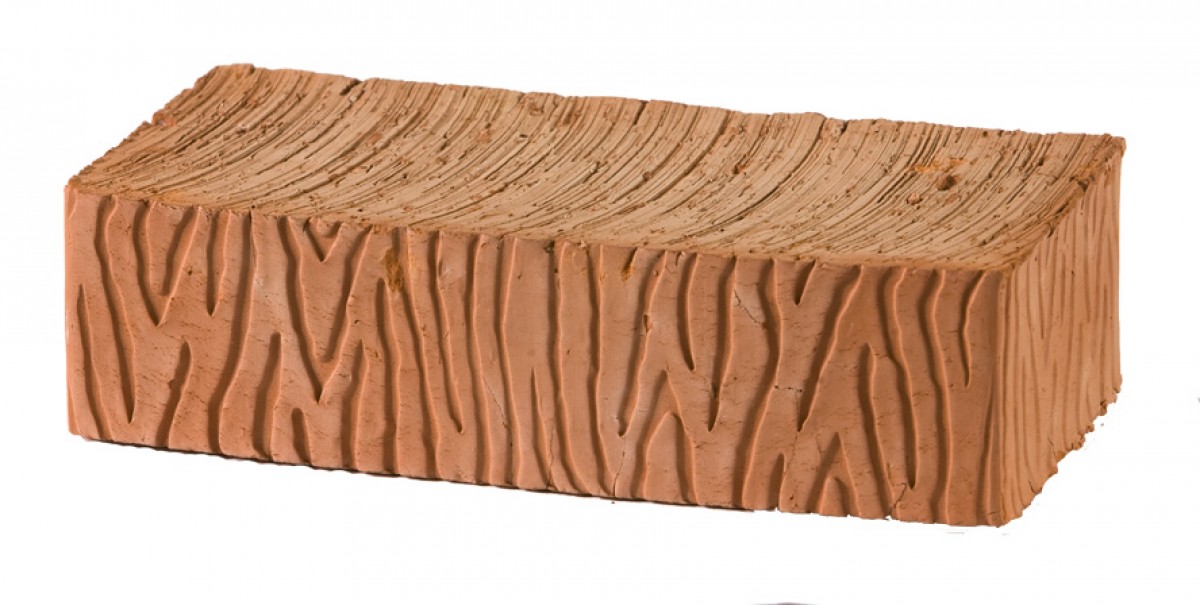
- Ordinary bricks come in only two versions: with a smooth surface, or with a relief applied to it. All products can have either a natural color or be dyed in their mass. As for the requirements for the appearance of ordinary and facing bricks, they also differ.
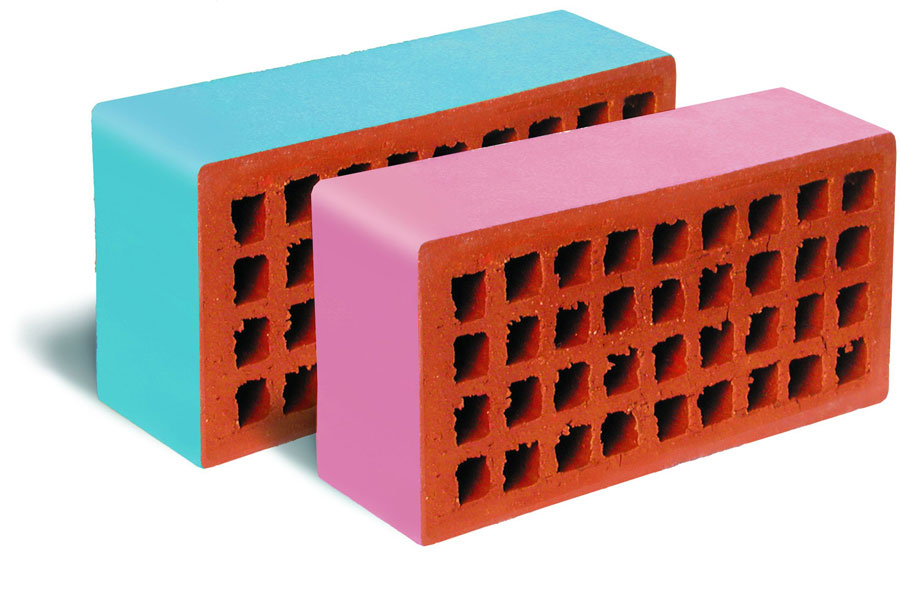
- For example, if for ordinary products a small percentage of defects in the form of cracks, broken edges, edges and corners is allowed, then for facing bricks this is completely unacceptable. The reasons for such strict requirements are clear, because the surface is not plastered.
- It remains to add that when designing objects where it is expected brickwork walls or, the brand of products, as well as their density and frost resistance, must be specified in the working documentation.

- GOST for ceramic facing tiles, which often imitate brick, regulates the requirements for appearance even more strictly, especially when it comes to first-class products. The use of such tiles provides undeniable advantages.
- Firstly, it costs much less.
- Secondly, due to the light weight of the cladding, the load on the foundation is reduced. And if you need to veneer it like a brick an old house, it is, of course, better to do this with tiles. At the same time, the facade does not lose at all the individuality of the relief that the brick provides. You can easily verify this by looking at the photo above.
Conclusion
Brickwork is heavy and needs to be supported on a foundation. You have to dig it up and, if the width of the tape is not enough, top it up. All these are additional costs and labor costs - something that every customer strives to avoid.
Buying a brick is not difficult, but determining its quality Without special knowledge, not everyone can do it.
So that the buyer is confident in what he is purchasing quality products:safe, durable and suitable for construction,
many manufacturers certify it, although this is a completely optional procedure.
GOST or TU?
Certificate for technical specifications
, confirming that no materials containing radioactive elements were used in the manufacture of bricks, and all material complies with sanitary and hygienic standards, can be obtained from Rospotrebnadzor.
But the presence of this document will not guarantee that the bricks will comply generally accepted standards, they may differ in size, percentage of materials in their composition, and this may affect on suitability for construction.
Each manufacturer has the right to issue your technical specifications, they are built according to a certain scheme:
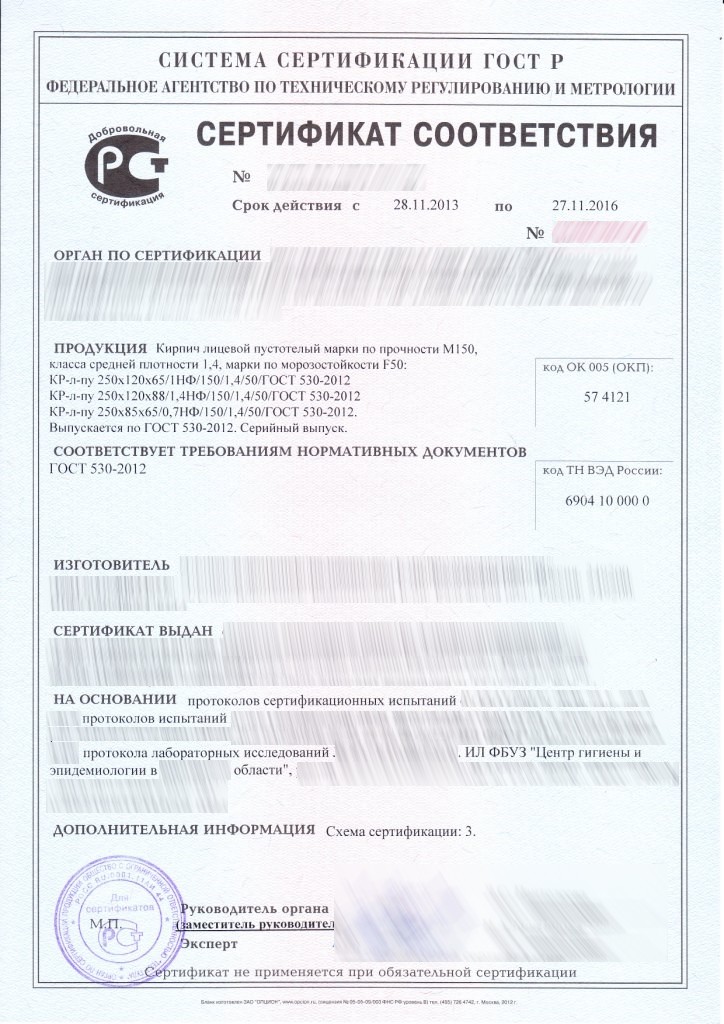
These specifications may be completely different from each manufacturer, and to be sure that the purchased brick complies with generally accepted standards, you need to make sure that certificate according to GOST. GOST is the State Industry Standard; all requirements for the material are the same. In order to make sure that all bricks correspond to them, special laboratories carry out research, the results are recorded in the protocol. Based on their results, a certificate is issued, the validity of which is limited. for a period of up to 3 years.
note the fact that the quality certificate must indicate which GOST the brick corresponds to: the first numbers indicate which products are being certified. The following shows in which year the standards were adopted.
So, construction material with a certificate for GOST 530-2012 belongs to ceramic bricks that meet the requirements adopted in 2012.
Ceramic brick: technical characteristics
The new GOST began to operate in 2013; it applies to the following building materials:
- ceramic bricks and stones used for the construction and cladding of any walls;
- clinker brick for the construction of foundations and walls subject to significant loads;
- brick, which is intended for masonry stoves and chimneys.

In addition, current standards classify bricks according to different technical characteristics.
- By purpose: ordinary, used for rough construction of walls or facing. In this document there are no restrictions on the color and texture of stones.
- In the new GOST definition given solid, hollow bricks and additional elements.
- Ceramic brick GOST 530-2012 varies by compressive strength from M100 to M300, this is the ability to resist any load without destruction.
- Frost resistance denoted by F with a number indicating the number of cycles maintained from 25 to 300. But these indicators are not the limit; some manufacturers achieve values up to 1000.
- Defined in GOST density of each product. All bricks are divided into groups according to thermal characteristics: from high efficiency with a density of 0.7-0.8 to low-efficiency bricks with a density of 2.0-2.4.
- Dimensions are strictly defined, deviation from them is allowed only to a minimum, so the brick can be single with dimensions of 250x120x65 mm; “Euro” –250x85x65mm; thickened – 250x120x88; modular single – 250x138x65.
- Also given determining the sides of a brick: What is poke, spoon and pastel.
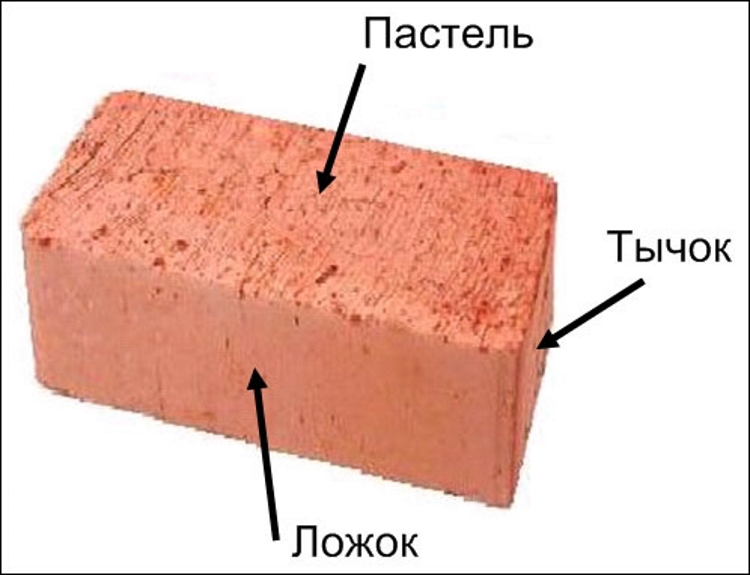
The interesting thing is that there are no distinctions by weight bricks according to GOST not provided, The mass of bricks can be absolutely any.
The appearance requirements stipulate that the color and type of the front edge can be any, the presence of defects should not exceed the specified values, so there should be no cracks at all on the facing bricks, and two cracks are allowed on the ordinary bricks.
Only an organization can issue a quality certificate according to GOST accredited by Gosstandart.
Price
Buying a brick will not cost no work, almost every region has a brick factory. This building material can be purchased either in large quantities or individually, in bulk purchases. shipping may be free.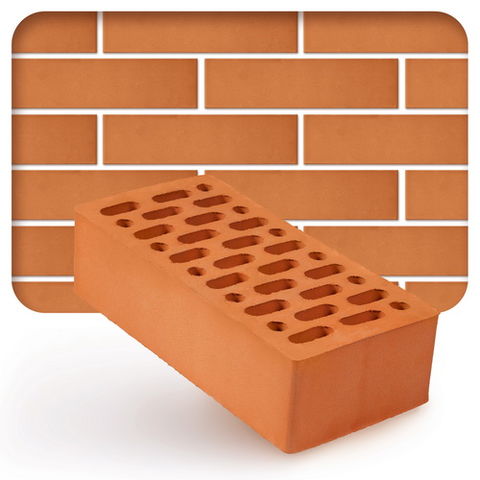
The cost will vary greatly on different types bricks, the front one will be more expensive than the ordinary one, the hollow one will be cheaper than the full-bodied one. And the price of a brick with a high grade is 20–30% more expensive than a brick with a low grade.
Profitable purchase double bricks for construction, since its consumption per 1 cubic meter. half as much, and the price is only 20% higher.
For the most ordinary full-bodied ceramic brick price per piece will be about 6 - 12 rubles, facing is more expensive - the average cost is 15 rubles, the most expensive is imported, the price is in the range of 35 - 45 rubles per piece.
Let's look at prices by region.
Moscow and Moscow region:
- a full-bodied, single M200 costs approximately 15.5 rubles;
- the same with the M100 brand - 11 rubles;
- hollow, M125 – 7.30 rub.

Voronezh:
- price for facing brick starts from 12.5 to 30 rubles;
- single full-bodied M125 – from 11.50 rubles;
- one and a half of the same brand - from 13 rubles.
Today, in the field of construction, materials such as ceramic bricks are increasingly being used. Clay and some additives are used as raw materials for its production. After molding, the product is subjected to a procedure such as annealing in special furnaces.
The reason for such a high popularity of this product is that it is durable, can be used even when laying stoves and fireplaces, has an acceptable cost and attractive appearance. In addition, such material can be used not only for construction external walls, but also internal.
Before considering the technological properties of ceramic stone, it is necessary to understand the methods of its production. In this case, the manufacturer uses the following production options:
- Plastic way. It involves obtaining a ceramic product of plastic formation. During the production of such a product, clay is used, the moisture level of which should not be higher than 17-30%. The process of extrusion into molds occurs using special equipment, and the molds are sent to a belt press. Upon completion of pressing, the finished product is sent to the oven for further firing. The resulting product by this method is called ceramic, plastic molding.
- Semi-dry method. In this case, the formation of the raw material is carried out under pressure. Ordinary clay is used as a raw material, and its humidity should not be higher than 8-10%. The product obtained during manufacturing is called semi-dry pressed brick.
Kinds
Taking into account the dimensions, the presented product can be manufactured in the following types:

Ceramic is also distinguished by the presence of voids:

According to thermal technical indicators, ceramic can be:
- effective,
- ordinary.

Where can it be used? You can use facing stone for finishing inside and outside the house. This product is characterized by high levels of strength and reliability. It retains its original appearance for a long time.
Price
When you come to the store to buy a ceramic product, you must understand that the price of the product depends on its dimensions, the presence of voids and technical properties. Taking these indicators into account, we can highlight the average cost of ceramic bricks, which is 8-18 rubles per piece.
Can you find out which standard size at sand-lime brick.
Ceramic brick is a very popular building material, which today can be used in the construction of the most various designs. The choice of this material should take into account the available variety of products, their technical characteristics and sizes. A house built from this material will serve you for a long time.






